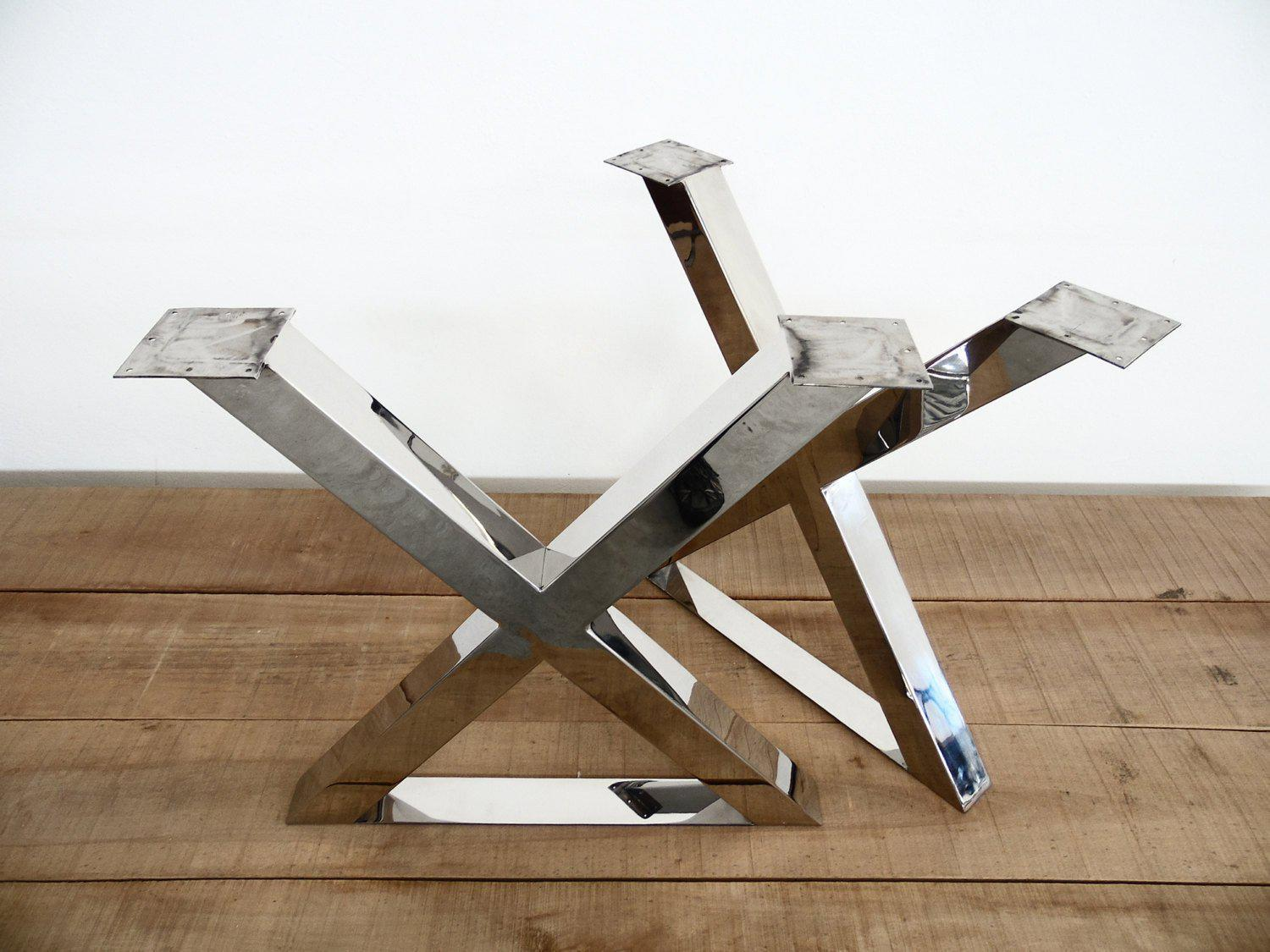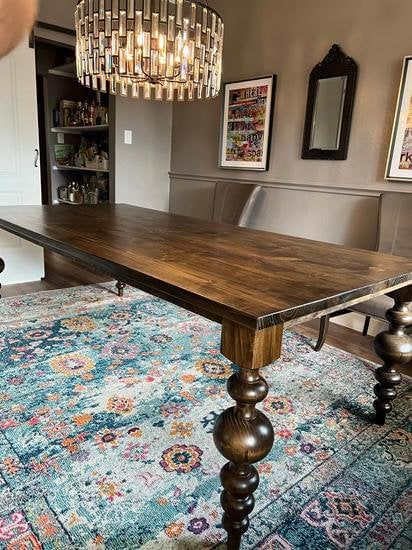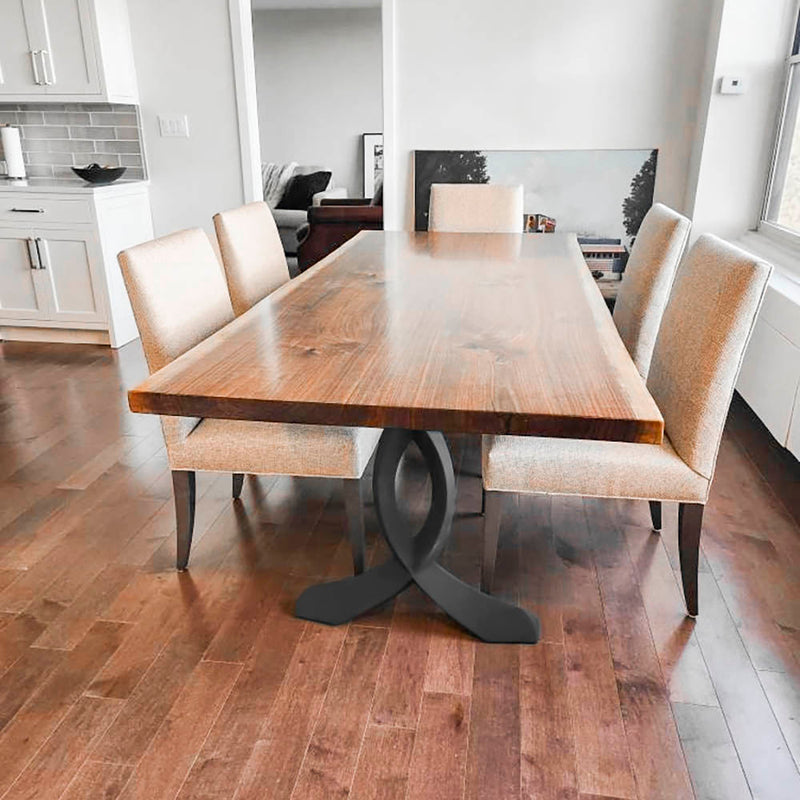The Top Trends in Dining Room Table Legs You Need to Know
The Top Trends in Dining Room Table Legs You Need to Know
Blog Article
Professional Tips for Putting Up Dining-room Table Legs for Maximum Security
When it comes to installing eating space table legs, attaining optimum stability is vital for both capability and aesthetics. What particular methods can improve security also further?
Select the Right Legs
When choosing the proper legs for your eating room table, it is essential to consider both functionality and aesthetic appeals. The legs you choose will substantially affect the general layout and stability of the table. Initially, assess the table's meant usage; if you expect regular events, sturdier legs, such as those made from strong wood or metal, might be better, as they offer enhanced sturdiness and assistance.
Basic eating tables typically range from 28 to 30 inches in height, so make sure the legs line up with this requirement for convenience. Tapered legs can include a modern touch, while transformed legs might convey a much more traditional aesthetic.

Select Appropriate Equipment
Exactly how can the best equipment boost the security and longevity of your eating room table? The choice of proper equipment is vital to guaranteeing that the legs of your table are safely attached and able to stand up to routine usage. High-grade screws, screws, and braces supply the essential stamina to sustain the weight of the table, in addition to any type of extra loads placed upon it during celebrations or meals.
When picking screws, go with those made from sturdy products such as stainless steel or brass, which resist corrosion and maintain stability with time. The length of the screws is just as crucial; they ought to permeate deeply right into the table's framework without compromising stability. For bolted links, think about making use of lock washers to avoid loosening due to vibration or activity.
Additionally, using edge braces can include extra support, especially for larger tables or those with much heavier tops. These brackets disperse weight uniformly and aid keep the table's form. Making certain that the hardware you select is suitable for the specific materials of your table will certainly additionally enhance its overall security and durability, allowing you to appreciate your eating experience for many years to come.
Ensure Correct Placement
Correct positioning of dining-room table legs is necessary for both visual appeal and useful stability. Misaligned legs can result in an uneven table top, which may not just be aesthetically unattractive but likewise compromise the table's functionality. To accomplish optimum positioning, start by gauging the distance from the table's edges to the leg attachment factors. This guarantees that each leg is positioned equidistant from the sides, creating a balanced appearance.
Use a level during installation to confirm that each leg is perpendicular to the tabletop. This action is crucial, as also small discrepancies can escalate right into substantial stability issues gradually. It is suggested to note the wanted leg positions on the underside of the table with a pencil or concealing tape before protecting them. This technique functions as a visual guide, permitting changes as required.
In addition, double-check the positioning after the initial screws are tightened, as adjustments may be essential before completely protecting the equipment. By prioritizing appropriate positioning, you not just boost the table's overall style but also ensure that it stays steady and useful for many years to find.

Think About Weight Distribution
After making sure appropriate alignment of the dining-room table legs, it's essential to consider weight circulation to improve stability and functionality. dining room table legs. Proper weight circulation is critical in stopping making certain and tottering that check this the table can sustain its desired tons without risk of tipping or falling down
When placing the legs, ensure they are put at equal ranges from the center of the table to evenly disperse the weight across the framework. Take into consideration the weight of the tabletop and any kind of items that will often hinge on it, such as tabletop devices or decorative items. Tables with much heavier surface areas ought to preferably have legs located closer to the corners, as this takes full advantage of the base of assistance and lessens the threat of instability.
Furthermore, if the table is planned for use in a high-traffic area, consider making use of heavier materials for the legs or including stabilizing aspects, such as cross-bracing or a lower rack - dining room table legs. These adjustments can help keep balance and avoid moving throughout usage. Eventually, a well-considered weight distribution method will dramatically enhance the table's general efficiency, guaranteeing it remains a practical and attractive focal point for your eating space
Examination Security Prior To Usage
Checking the security of the dining-room table before usage is an essential have a peek at this site step that must not be forgotten. Making certain that the table is steady and protected can protect against accidents and prolong the life expectancy of the furniture. Begin by applying gentle stress to different factors on the table surface. Lower on the facility and afterwards along the sides, changing or observing any type of wobbling. If the table shows instability, determine the legs or joints that might require modification.
Next, check that all screws and fasteners are tightened properly. Loosened links can bring about instability and potential damage with time. If needed, utilize timber adhesive on joints to improve stability, ensuring to permit adequate drying time.

Final Thought
Finally, the installation of dining-room table legs requires cautious factor to consider of products, placement, weight, and hardware distribution to accomplish he has a good point optimum security. By selecting premium bolts and sturdy legs, guaranteeing precise alignment, and distributing weight uniformly, the architectural integrity of the table can be dramatically enhanced. Conducting a stability test before regular use further ensures that the table will certainly endure daily stress, therefore giving a trusted and risk-free eating experience.
When it comes to setting up eating room table legs, achieving maximum stability is paramount for both performance and aesthetics. The legs you choose will significantly impact the overall style and security of the table (dining room table legs). Typical eating tables normally vary from 28 to 30 inches in elevation, so make certain the legs straighten with this requirement for convenience.Correct placement of eating space table legs is vital for both visual allure and practical stability.In conclusion, the installation of dining area table legs needs cautious consideration of products, hardware, weight, and placement distribution to attain optimum stability
Report this page